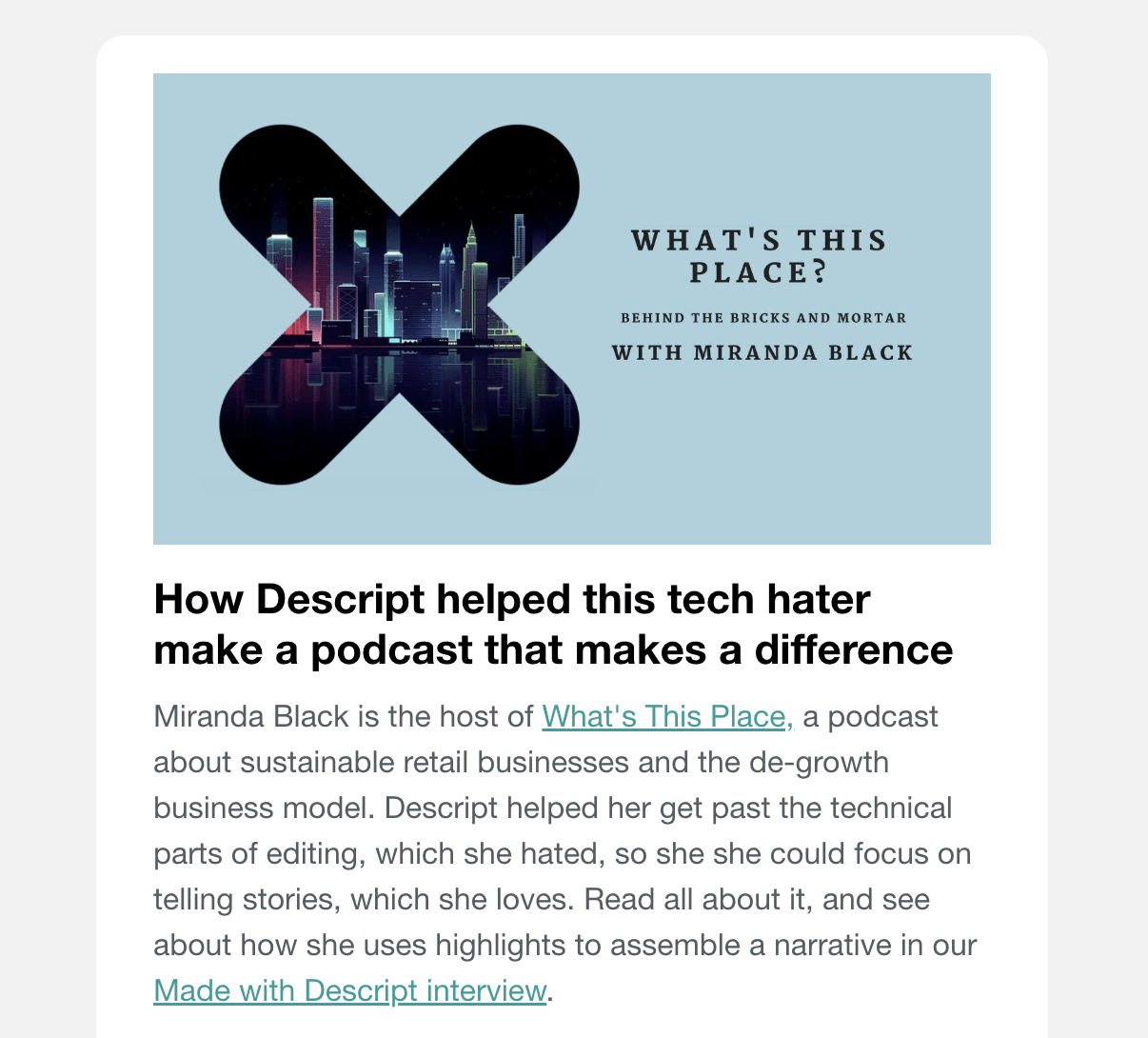Content Marketing
How to Create Successful Case Studies That Turn Prospects Into Buyers
Marketers have long known that word-of-mouth and customer reviews are powerful marketing tools. In this realm of authenticity, successful case studies emerge as the champions of social proof, providing a tangible narrative that showcases real customers finding real solutions. Yet, the challenge lies in extracting their true value and optimizing the conversion potential of your case study campaigns.
How can you ensure your case studies tell a persuasive story that moves prospects down the funnel? Through structured advice and actionable insights, we explore how brands can leverage the power of case studies to elevate customer engagement and increase conversions.
The Formula for Successful Case Studies
To harness the potential of case studies in converting leads into customers, the process begins by crafting a narrative that compels readers to immerse themselves in the journey. Key elements lay the foundation for this transformative storytelling:
- Company or Individual: The central figure of the case study, whether a business or an individual, serves as the embodiment of the narrative
- Challenge: The hurdles faced by the protagonist before their engagement with your brand provide context and stakes.
- Solution: Your brand’s intervention that overcame the challenges, depicting your product or service as the guiding light.
- Results: The tangible impact post-solution—quantifiable data that reinforces the value offered.
However, there’s a deeper layer to a successful case study—a layer that taps into the realm of emotions. Research shows that approximately 95% of consumers purchase based on unconscious emotional connections. This revelation propels the case study beyond a mere documentation of events. Instead, it becomes a vessel for evoking emotions. Here are four ways you can achieve this emotional resonance.
1. Real People, Real Stories
A case study isn’t just about showcasing an individual; it’s about weaving their authentic struggles into the narrative. Consider Bryan University, spotlighting students with faces and names—a practice that triggers relatability and connection.
Shining the spotlight on a featured individual within your case study accomplishes several strategic goals:
- It opens the door for direct quotes, allowing readers to gain insights directly from the customer’s voice.
- It fosters an emotional connection between potential customers and those who have already found a resolution through your offering. This connection becomes a catalyst for trust and engagement.
- It invites readers to envision themselves in a similar successful scenario—a projection that nudges them further down their buyer journey.
While the focus might shift in the context of a B2B case study, highlighting a well-known company’s name or logo can achieve a similar effect.
2. Numbers Speak Louder
Qualitative anecdotes are enhanced by quantitative data—the numbers that propel prospects toward conversion. You can’t simply say that a customer saved time and money. Not only is that an overused refrain, but it’s also difficult for prospects to believe because it lacks detail.
Numbers evoke a fear of missing out (FOMO), amplifying the persuasive impact. A prime example is Contently’s case study with Cox Communications, where they prominently showcase the measurable result—a 75 percent increase in leads and a 50 percent conversion rate increase.
The type of results metrics will vary based on the customer. Here are some examples of results you may be able to quantify:
- Return on Investment (ROI): Showcase how your product or service led to a financial gain for the customer.
- Time Savings: Demonstrate how your solution helped customers save time in their processes.
- Cost Reduction: Highlight any cost savings achieved through the use of your product or service.
- Revenue Growth: Illustrate how your offering contributed to increased sales or revenue for the customer.
- Customer Retention: Demonstrate how your solution improved customer loyalty and retention rates.
- Lead Generation: Showcase the number of leads generated or improvements in lead quality.
- Conversion Rates: Highlight any improvements in conversion rates, such as higher click-through rates or better conversion from leads to sales.
- Brand Awareness: Showcase improvements in brand recognition or visibility resulting from your solution.
3. Ask the Unconventional
Rather than relying on the conventional “challenge-solution-results” path, dive deeper into emotions by asking questions that reveal the prospect’s hesitations, frustrations, and aspirations.
- Did something frustrating happen that led you to this purchase?
- Did you hesitate before you made this purchase? What made you hesitate?
- Did you check out a competitor? Did you almost choose them? Why did you ultimately choose us instead?
- B2B: How has our product affected your organization’s efficiency?
- B2C: How did your purchase make you feel? Did your mood change?
For example, Dell Perspectives’ editor-in-chief goes deep into her department’s challenges in this case study with Contently—beyond the typical case study framework. She discusses her personal desire to hold a job where she could make a difference in terms of diversity and inclusion at Dell and how Contently helped her elevate more diverse voices.
4. Show, Don’t Tell
While words convey meaning, visuals capture hearts. Embed imagery that showcases your product in action, akin to TikTok’s case studies, so prospects can envision their success.
The magic of successful case studies resides not only in their structural elements but also in the feelings they stir. By incorporating these emotional touchpoints, you can set the stage for a transformative narrative that lingers in the minds of your prospects, edging them closer to becoming loyal customers.
8 Ways to Optimize Your Case Study Conversion Rate
To fully harness the potential of your case studies, it’s crucial to amplify their reach through strategic promotion. Here are some tips to get started.
1. Create Impactful Presentation Slides
The easiest way for your executives, sales department, and account management team to share a case study is in a presentation. Make slides they can slot into any deck.
For example, Taboola includes a summary slide that covers the basics, along with several slides that take the story much further. Here’s what that summary slide looks like:
2. Post on Your Website
Share each of your case studies on your website, accompanied by a strategically placed call to action. Encourage visitors to take specific actions, such as making a purchase, signing up for your newsletter, or initiating a conversation with your sales team. This approach maximizes the visibility of your case studies and seamlessly guides visitors toward conversion.
For instance, consider the heartwarming case studies from City of Hope, which spotlight the inspiring journeys of cancer survivors. These narratives are skillfully integrated with a sign-up form embedded within the page.
3. Leverage Your Email List
If you have a regular newsletter, you could feature your new case study in a dedicated slot, or you could send a dedicated email blast, as Descript did. Their catchy headline promised to share a story of transformation with their audience, with a link to the full interview.
You should also arm your sales team with an email template they can use to message prospects who may be interested in your case study.
5. Create Social Media Content
The most effective way to share a case study on social media is to create custom content for each platform—you could simply post a link to your webpage and pack up for the day, but you’d leave conversions on the table. Here are some ideas:
- Record an interview with your customer to make a YouTube video.
- Use the audio from that recording to publish a podcast.
- Use clips from that recording to make Instagram or TikTok Reels.
- Write a thread for X or Threads.
- Write a long-form LinkedIn post.
- Host an AMA (Ask Me Anything) with your client on Reddit.
- Link to your case study when answering relevant questions on Quora.
- Post your customer images to Pinterest.
- Write suggested social media copy for your employees to share.
6. Beef Up Your Blog
Use and re-use your case studies as examples in blog articles that you create for different purposes. This example from Mint uses testimonials from customers who’ve successfully built a budget. Including these testimonials in your blog posts helps connect your claims to stories about real people, making them more engaging.
7. Pitch the Media
You may need special permission from your client for this one—but it’s worth jumping through the extra hoops. If your client is willing to come to interviews with a journalist, you could be featured in an article from a relevant publication or blog.
This example from Persado shows how they teamed up with their client, Nike, to pitch Retail Touchpoints on how Nike used their AI tools.
9. Run Ad Campaigns
Make the most of advertising campaigns to show potential customers that others like them have successfully made purchases based on case study results. Run ads featuring key takeaways from your case study to boost your conversion rates.
For instance, Reddit exemplifies this strategy by incorporating snippets and images from a case study into a Facebook ad campaign:
Unleashing the Power of Persuasion Through Case Studies
Just as word-of-mouth marketing has always resonated with consumers, case studies emerge as the modern-day manifestation of this powerful concept, providing undeniable social proof. By strategically combining emotional resonance, specific data, and smart distribution, you’ll unlock the full potential of case studies to propel prospects toward conversion.
For more insights on optimizing case studies and maximizing your content marketing assets, subscribe to The Content Strategist newsletter today.
Image by pikisuperstarGet better at your job right now.
Read our monthly newsletter to master content marketing. It’s made for marketers, creators, and everyone in between.












